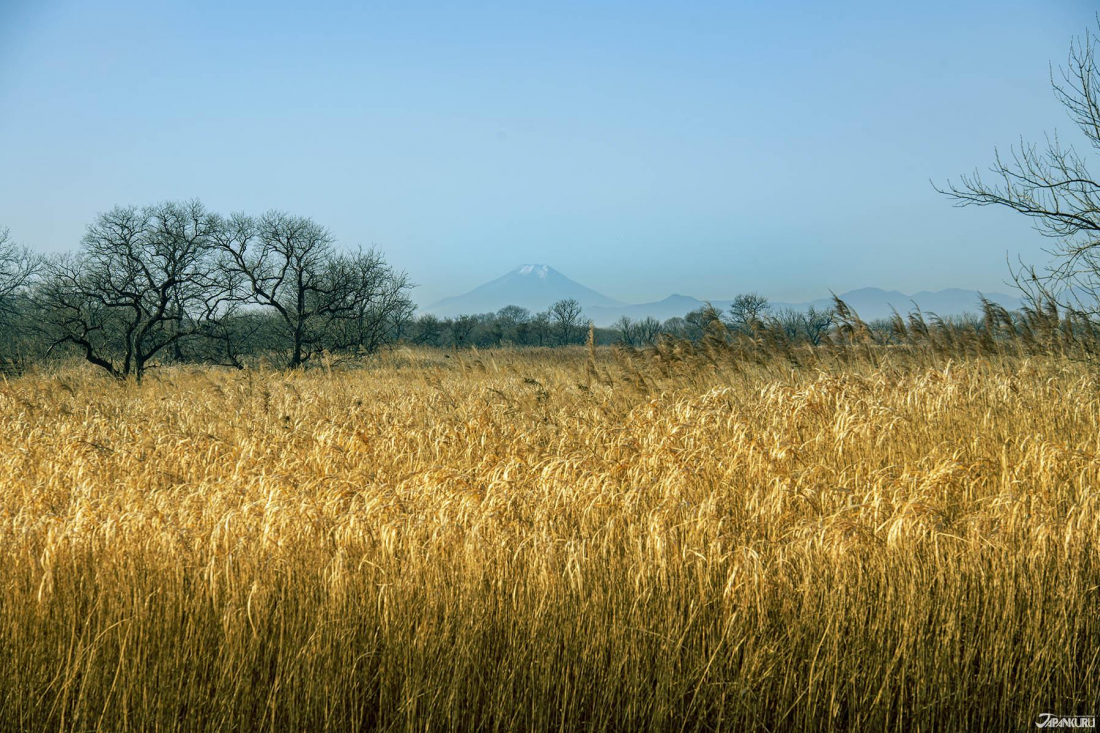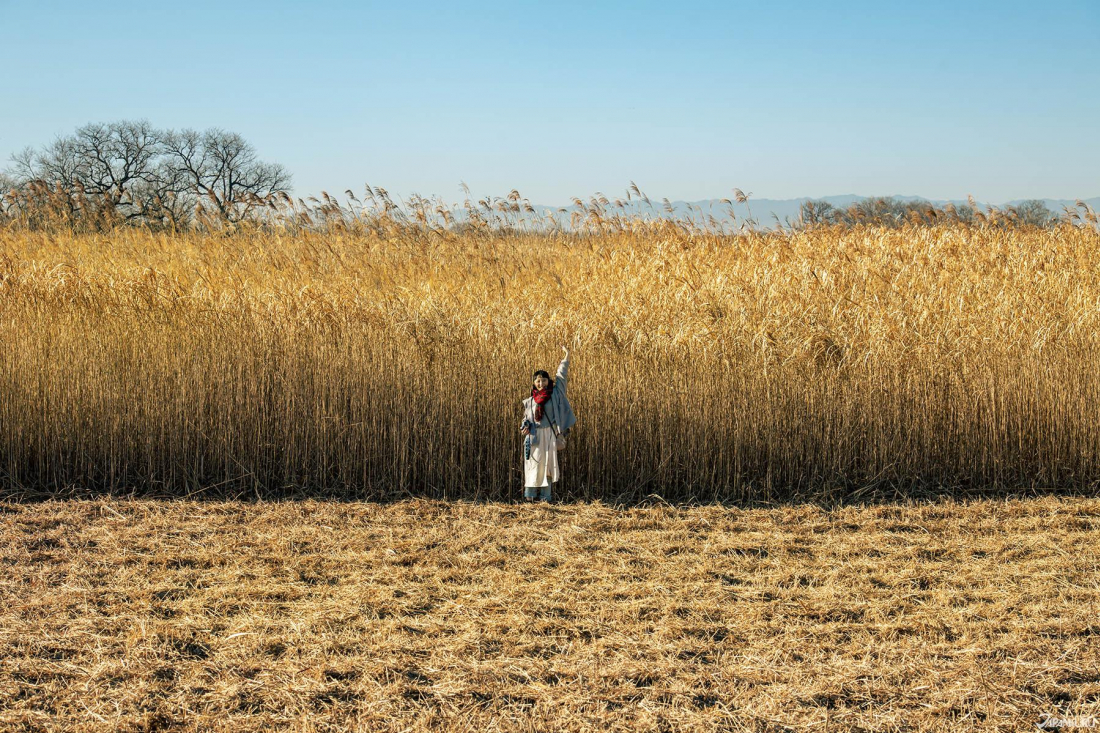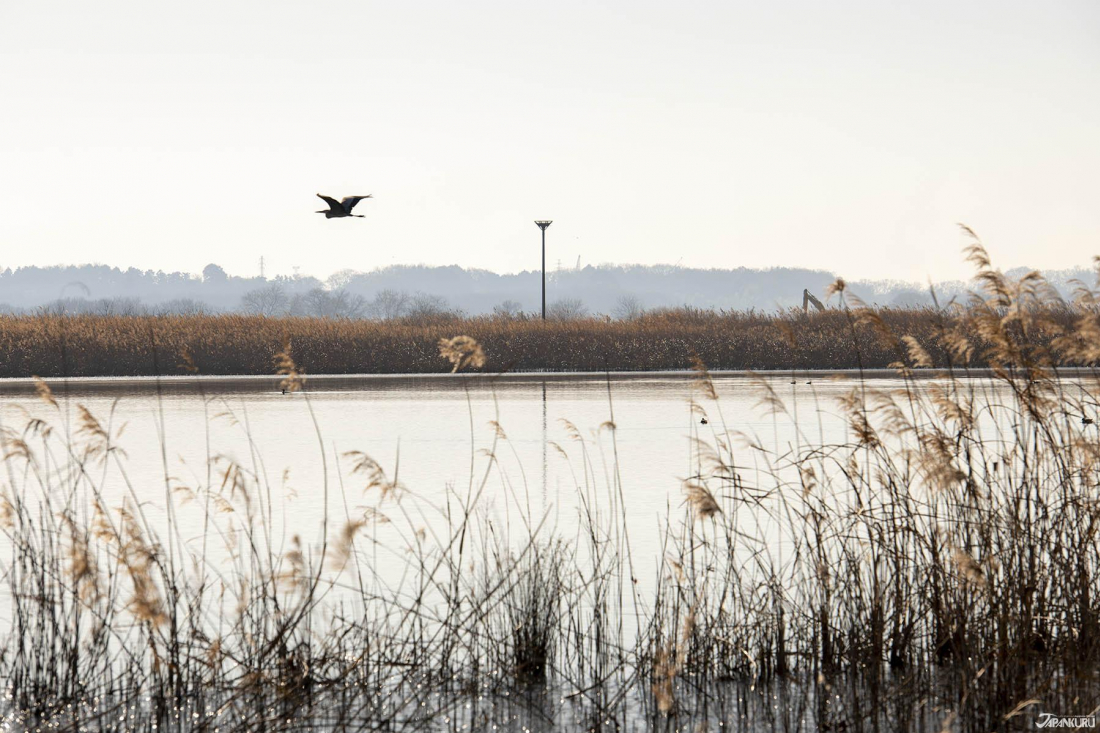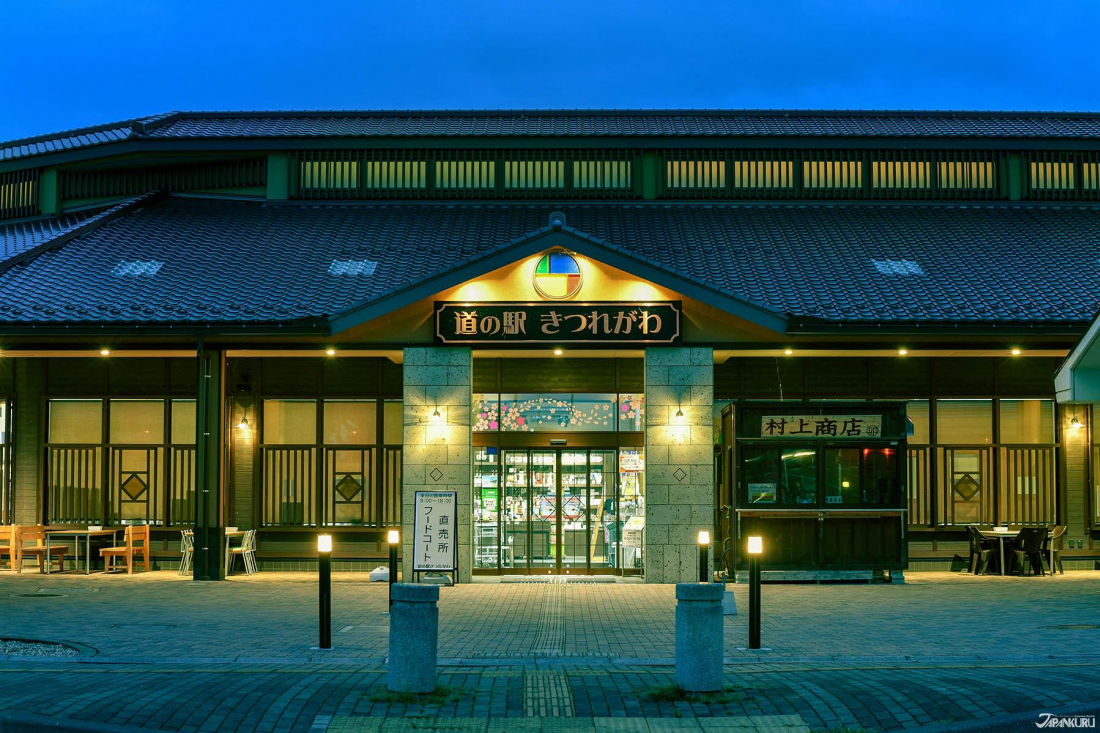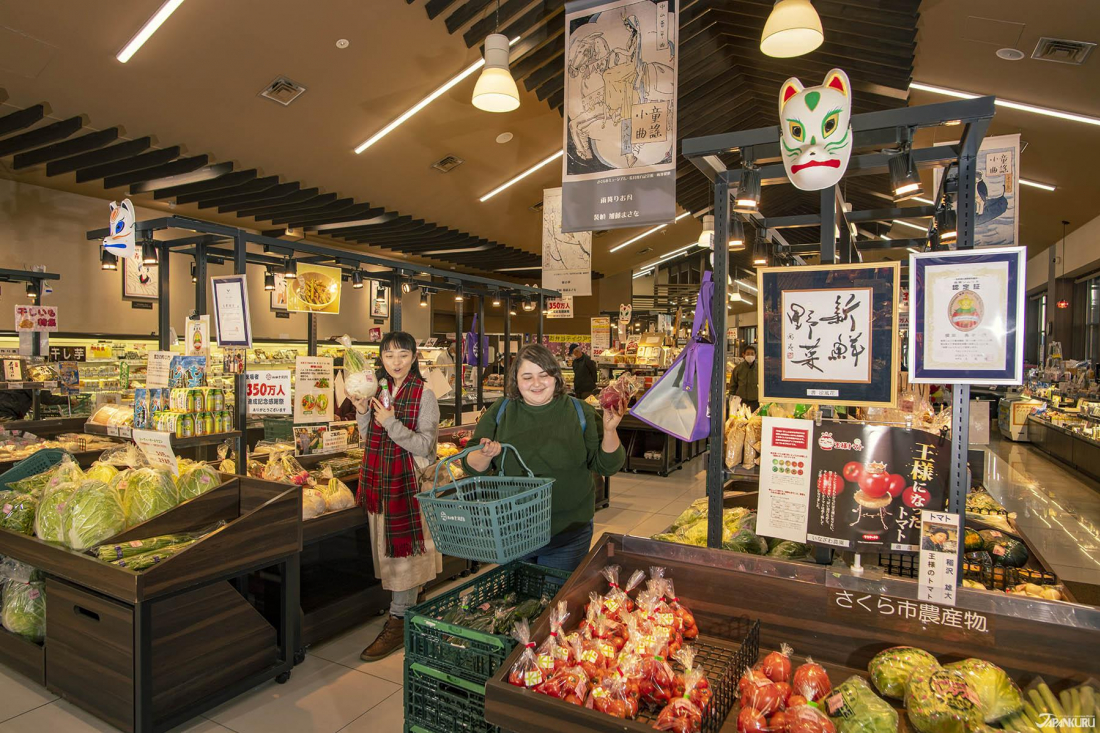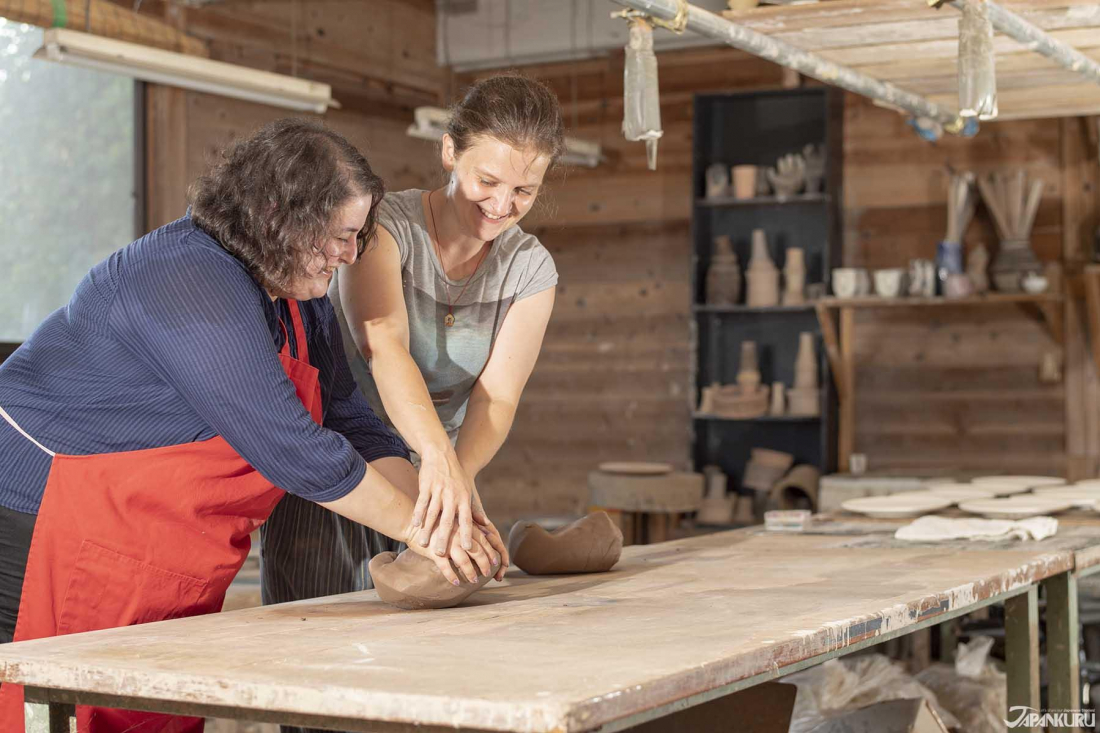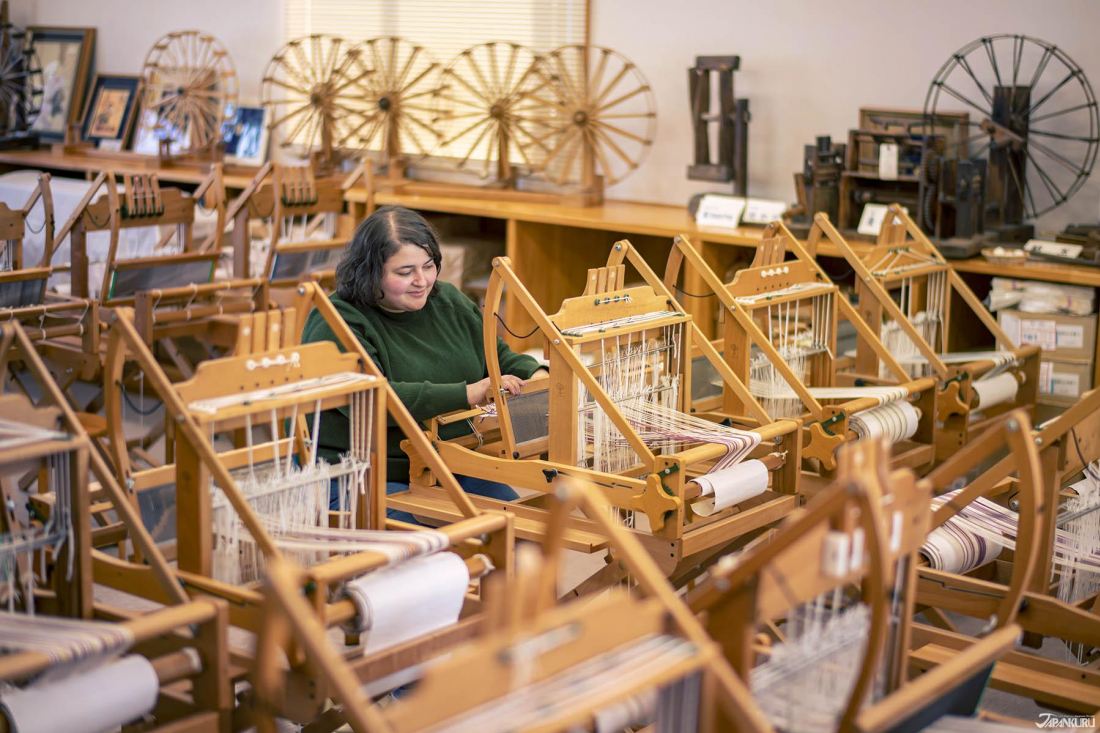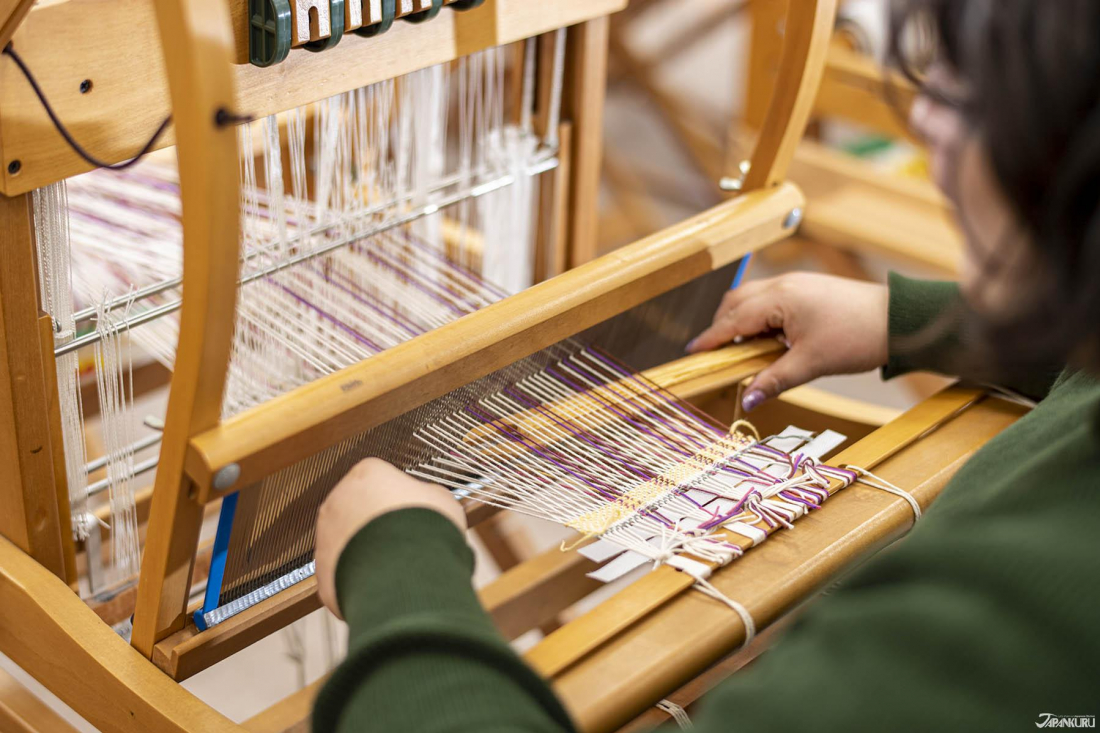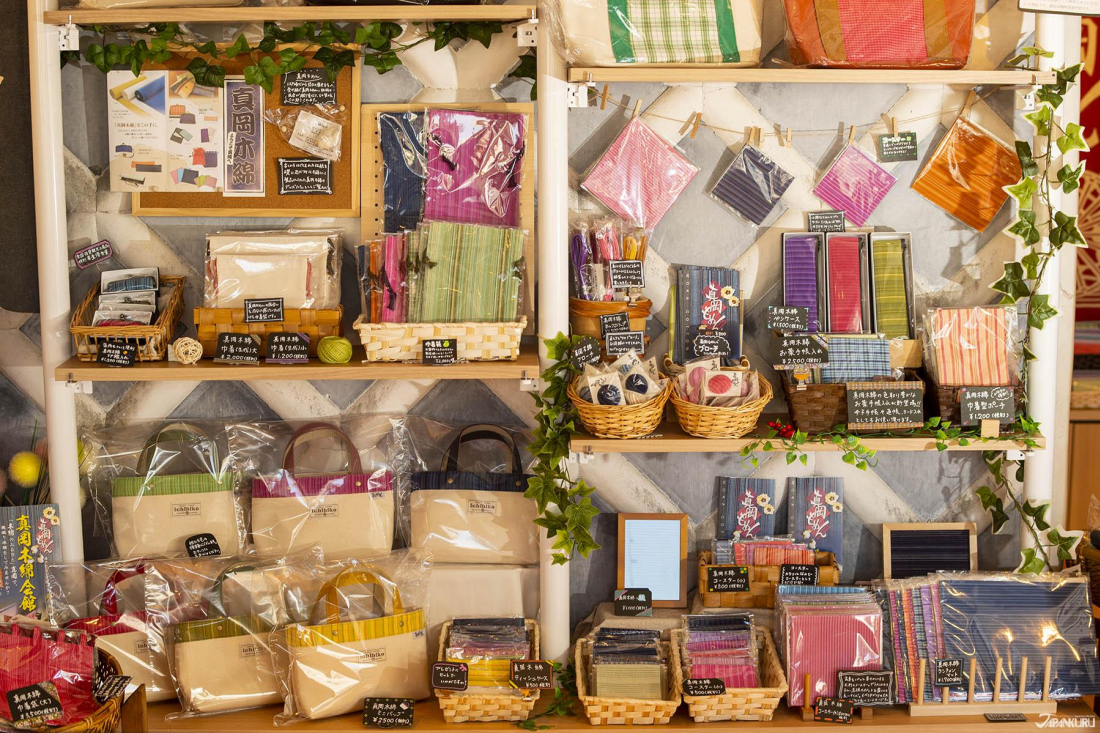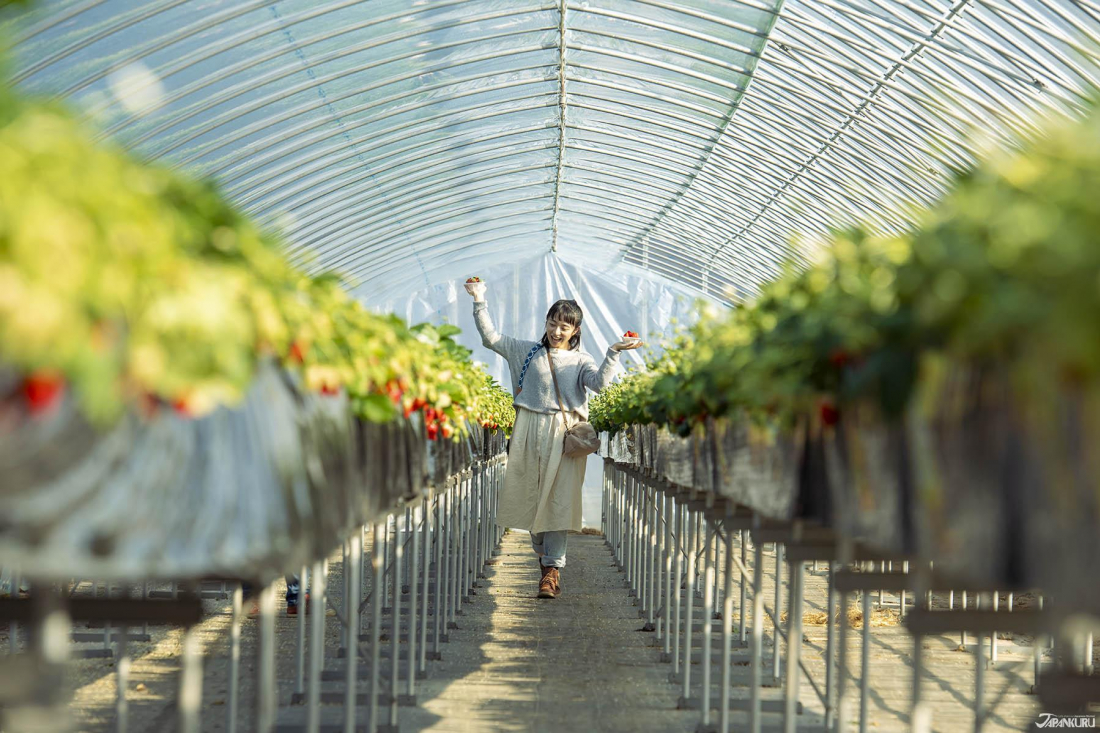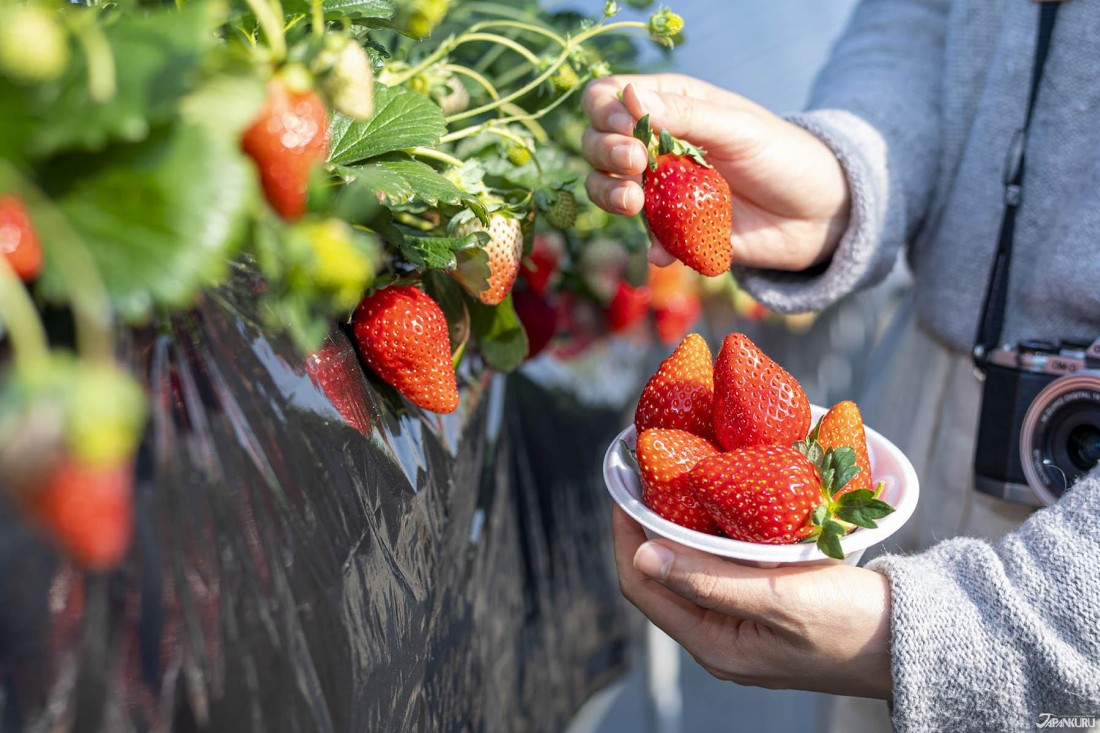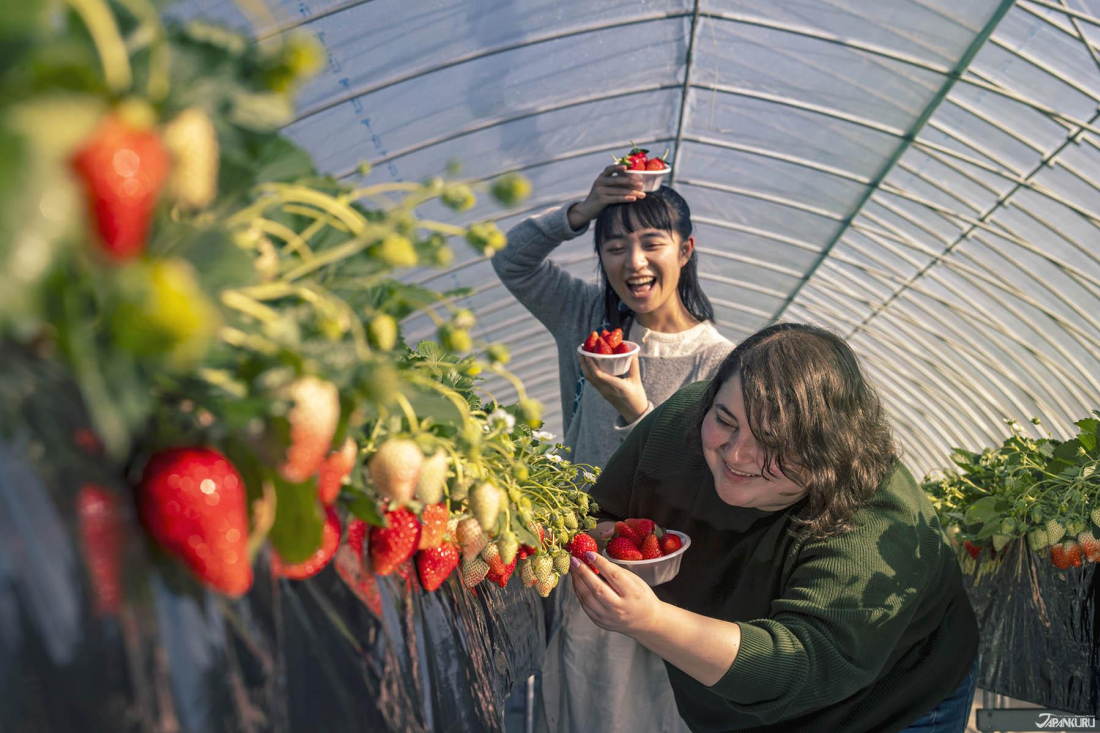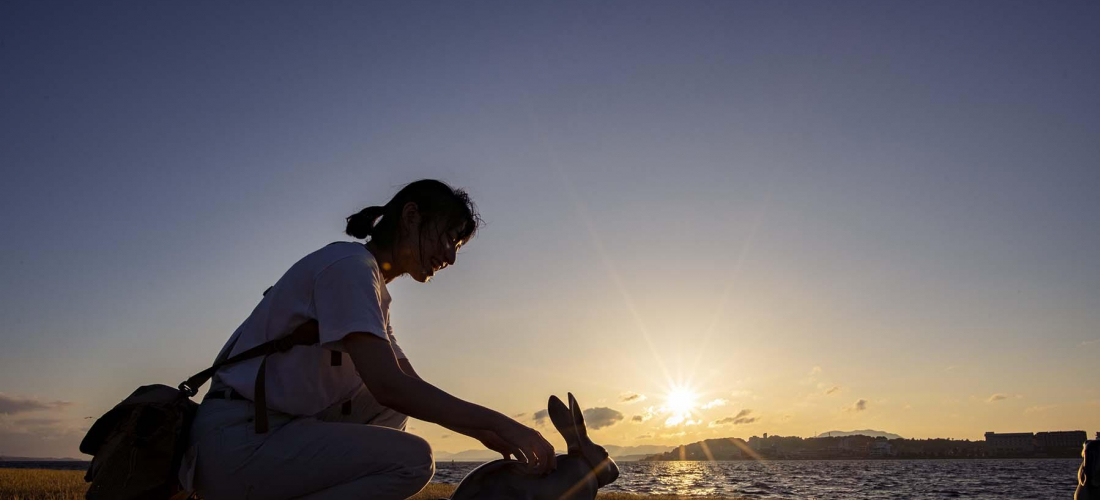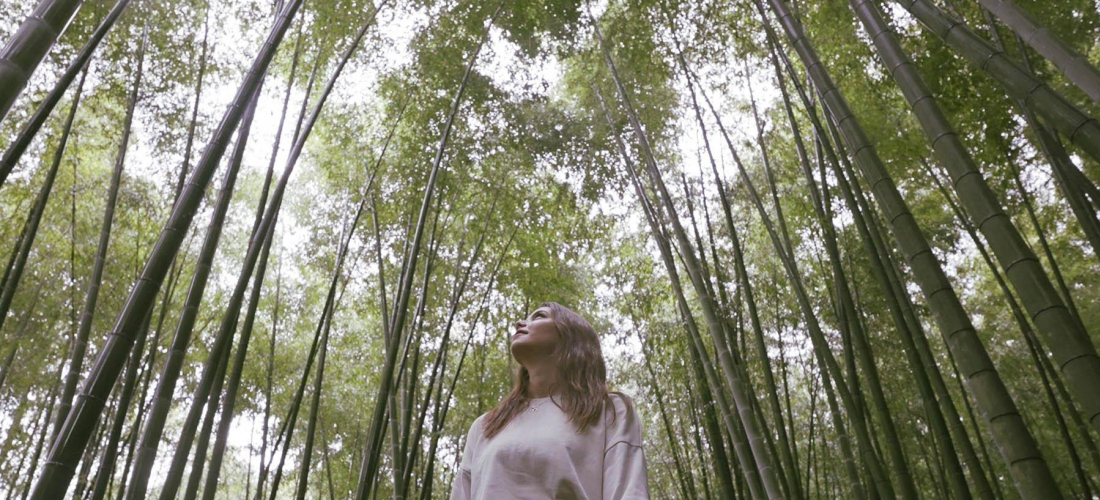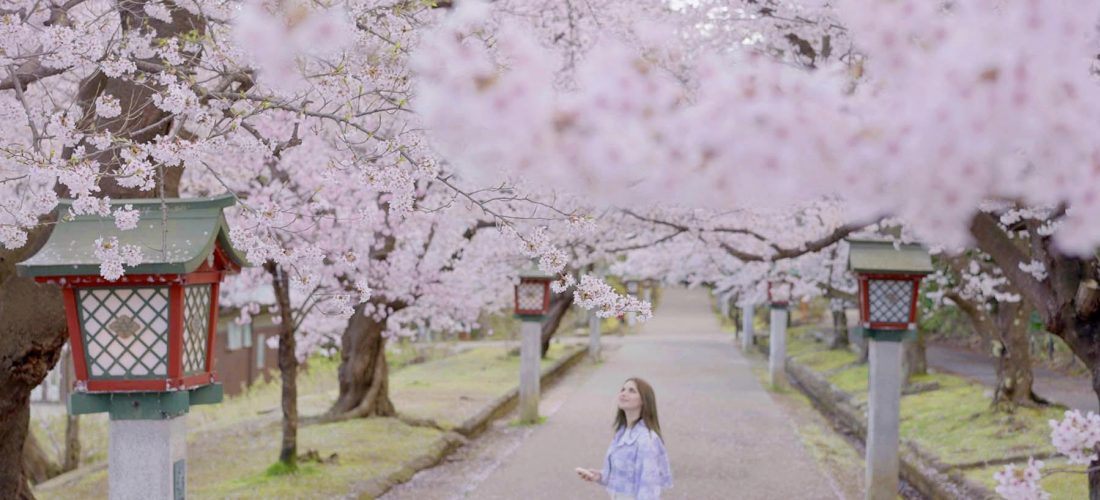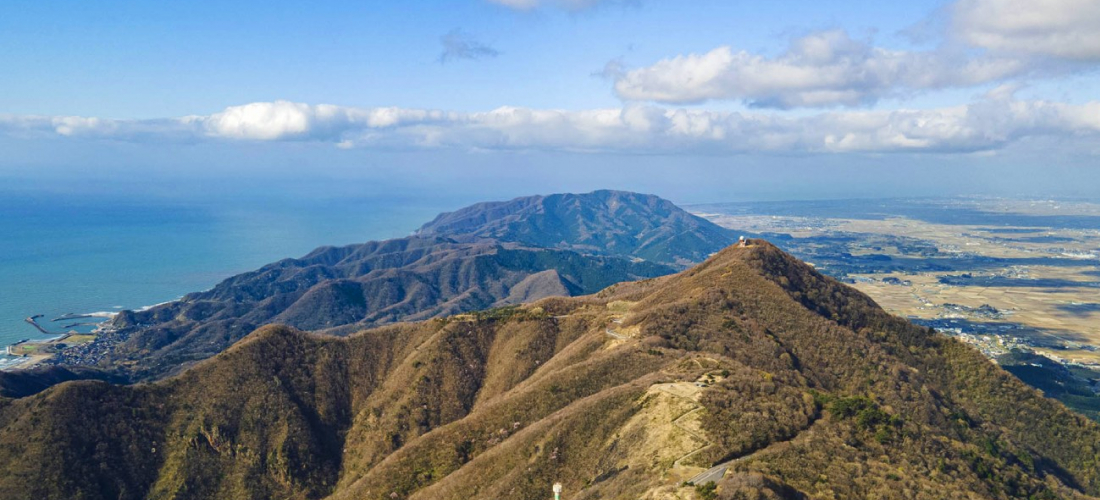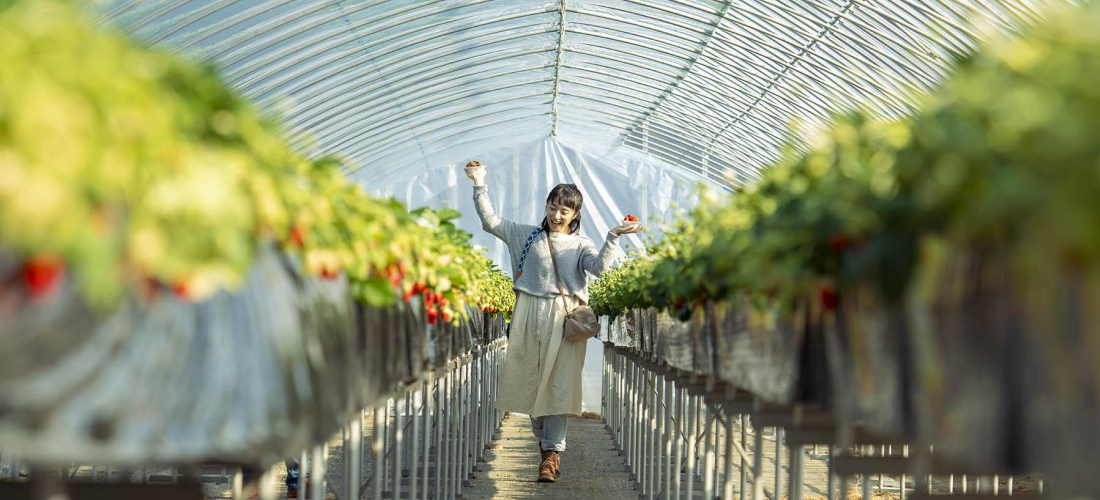
CONTENTS
Près de Tokyo mais très différent de la capitale, ce rapide voyage hivernal à Tochigi vous fera vivre des paysages naturels rares et de l’artisanat traditionnel, et une chance de plonger vos orteils dans l’air pur et les fruits délicieux de la campagne japonaise!
Visiter Tochigi pour un hiver vivifiant
Tochigi propose un type différent de voyage hivernal, avec des villes plus petites pleines d'habitants sympathiques, espacées par une campagne ensoleillée, et jamais loin du centre pratique de Tokyo. Ce voyage hivernal dans quatre villes de Tochigi n'est pas loin de la capitale du Japon, mais il comprend des paysages naturels comme nulle part ailleurs, des fruits savoureux cueillis directement sur la tige, de l'artisanat traditionnel transmis au fil des générations et des façons de participer à ces derniers!
1. Oyama (小山市)
Watarase Reservoir (渡良瀬遊水地)
Watarase Reservoir, également appelé Watarase Retarding Basin, est une zone humide Ramsar qui s'étend sur 3300 hectares, une grande partie des terres couvertes de hauts roseaux qui prennent une couleur dorée accueillante après la fin de l'été. Il y a plus d'un siècle, la région était parsemée de marais et de zones humides comme le marais d'Akaso, et les habitants ont construit des villages à proximité tout en cultivant la terre. De nos jours, l'un de ses principaux objectifs est de collecter les eaux de crue et d'éviter les inondations massives dans la région de Tokyo, mais la région est toujours un trésor naturel! Des dizaines d'espèces de poissons et d'oiseaux s'installent dans l'eau et sur la terre, et de nombreux oiseaux s'arrêtent au cours de leurs migrations annuelles et environ 1000 espèces de plantes différentes poussent dans ces zones humides.
En arrivant au réservoir Watarase, la première chose qui vous saute aux yeux est le champ infini de grands roseaux, appelé "yoshi" (よ し) en japonais. Glissez-vous entre les roseaux serrés, chacun facilement deux ou trois fois votre hauteur, et vous aurez l'impression de marcher dans un autre monde ou une scène d'animé japonais. Lorsque le temps est chaud, les roseaux creux yoshi gardent l'air frais, c'est pourquoi ils sont utilisés "papirus" japonais traditionnels (et les anches de Watarase sont considérées comme les meilleures), mais à l'automne, les roseaux perdent leurs feuilles et il est plus facile de s'y promener sans se retrouver face à un mur de verdure.
Quand l'hiver prend fin en mars, les habitants préparent la terre pour une année de nouvelle croissance avec un événement spectaculaire qu'ils appellent "Yoshi-yaki" (よ し 焼 き), littéralement "Brûlot de yoshi"! Après une préparation minutieuse, les spectateurs regardent les champs de roseaux bruler. D'ailleurs, la fumée qui s'échappe des flammes est suffisamment intense pour apparaître sur les radars météorologiques!
Pour les amateurs d'oiseaux, cet endroit est un incontournable. Les cigognes orientales construisent des nids sur des plates-formes spécialement construites chaque année, et à la fin de l'été, plus de 100 000 hirondelles volent dans les airs ensemble au-dessus de Watarase. Avec une grande variété d'espèces d'oiseaux vivant ou s'arrêtant au réservoir, il est extrêmement populaire auprès des ornithologues amateurs, qui viennent souvent à la recherche d'un aperçu du busard des marais de l'Est lors de son voyage migratoire en provenance de Russie.
Outre les charmes naturels abondants, le réservoir de Watarase est également connu pour accueillir des événements auxquels vous pouvez participer, tels que des festivals ou des promenades en canoë, alors consultez le site officiel avant de vous y rendre!
Watarase Reservoir (渡良瀬遊水地)
Shimonamai, Oyama, Tochigi
Official Website (jp)
2. Sakura (さくら市)
Michi-no-Eki Kitsuregawa (道の駅きつれがわ)
Au Japon, les Michi-no-Eki sont comme des haltes stylisées, et ce sont des endroits pratiques pour profiter d'un peu de la culture et de quelques plats locaux le long des autoroutes japonaises. Mais Michi-no-Eki Kitsuregawa est tout cela et plus encore, grâce aux installations onsen de l'aire de repos sur place, placées autour d'un bâtiment principal rétro construit pour refléter le style de la période Taisho du Japon (1912-1926). Kitsuregawa Onsen (喜 連 川 温泉) alimente les bains du Michi-no-Eki, et c'est l'un des trois grands "bihada no yu" du Japon, ou sources chaudes censées vous donner une belle peau!
Prêt à continuer votre voyage de Tochigi avec une peau éclatante parfaite pour vos photos? Au Michi-no-Eki Kitsuregawa, vous pouvez en fait choisir de simplement plonger vos pieds dans l'eau à leur bain de pieds à l'entrée, ou vous immerger complètement dans le onsen de leurs installations de spa de jour. Votre peau vous remerciera après une journée bien remplie sur la route.
Bien sûr, la zone commerçante de Michi-no-Eki Kitsuregawa propose des souvenirs de toutes sortes (y compris des produits uniques de mascottes locales), mais il y a aussi des allées pleines de produits locaux frais et d'autres friandises! Les panneaux vantent les étalages de légumes comme «l'aubergine onsen», qui est la première aubergine à être cultivée avec de l'eau volcanique onsen japonaise, et aurait une texture délicate et une saveur sucrée. Le populaire "onsen pan" de Kitsuregawa (温泉 パ ン, pain onsen) ne contient en fait aucune eau onsen, mais les petits pains sucrés côtoient de minuscules pommes Alps Otome.
Michi-no-Eki Kitsuregawa (道の駅 きつれがわ)
4145-10 Kitsuregawa, Sakura, Tochigi
Official Website (jp)
3. Mashiko (益子市)
Mashiko Ceramic Art Club (益子陶芸倶楽部)
Mashiko est connue pour les Mashiko-yaki (益 子 焼), il n'est donc pas surprenant que la ville regorge encore d'artisans céramistes et de potiers traditionnels. Mashiko Ceramic Art Club est un studio de céramique avec sa propre maison d'hôtes kominka, ce qui signifie que vous pouvez rester à Mashiko pendant une heure ou deux et profiter d'un court atelier de poterie, ou vous pouvez rester pendant des semaines à la fois et perfectionner vos compétences Mashiko-yaki à la perfection. Le club est géré par une famille japonaise, mais grâce aux excellentes compétences en anglais du professeur hongrois de l'atelier, la communication est un jeu d'enfant.
4. Moka (真岡市)
Moka Momen Cotton Hall (真岡木綿会館)
Le nom "Moka" est synonyme de tissu de coton traditionnel et de tissage à Tochigi, grâce à la haute qualité du "coton Moka" cultivé localement (真 岡 木 綿). Les fibres sont robustes, mais réputées pour être aussi lisses que la soie, et les artisans excellent depuis longtemps dans l'utilisation des techniques de blanchiment sarashi traditionnelles (晒 し) pour faire ressortir les couleurs sur le coton. Il existe des archives montrant que le coton Moka représentait autrefois 80% des produits en coton au Japon!
Aujourd'hui, treize artisans experts du tissage perpétuent les traditions locales du coton Moka et continuent de les transmettre à la Moka Momen Cotton Hall, où les visiteurs peuvent non seulement voir les artisans au travail, mais également participer à des ateliers! Vous avez toujours voulu essayer le tissage sur un métier à tisser? Que diriez-vous de teindre un bandana, ou même (si vous avez le dévouement) de filer votre propre fil de coton Moka? Appelez à l'avance pour faire une réservation!
✴ Atelier de métier à tisser: 700 yen.
✴ Atelier de teinture: mouchoir 500 yen / bandanas 1,000 yen.
✴ Des ateliers de filature peuvent être disponibles sur demande.
Igashira Kanko Strawberry Farm (井頭観光いちご園)
À Tochigi, le mot «frais» sera probablement suivi par «fraises», et Moka produit en fait plus de fraises que toute autre ville du Japon! Ici, on cultive les fameuses fraises «Tochiotome» de Tochigi (と ち お と め) ― grandes, rouge vif et débordantes de saveur sucrée ― que vous pouvez choisir vous-même, directement sur la tige! Vous ne pouvez pas trouver plus fraises plus fraiches qu'ici, et cela ne nécessite pas de réservation non plus – il suffit de se présenter pendant la saison des fraises pour trouver les meilleures fraises du jardin.
Leur plan de cueillette de fraises est une bonne affaire inhabituelle, à 1500 yens ou moins par adulte pour des fraises que vous cueillez vous-même à volonté, sans limite de temps. Les amateurs de fraises ne devraient pas manquer!
La ferme de fraises offre également d'autres options de cueillette de fraises assez uniques, comme la «cueillette de fraises en ligne» longue distance. Ou essayez de cueillir des fraises à la tombée de la nuit lors de leurs «Strawberry Nights» pour des boissons chaudes, une fondue au chocolat et une atmosphère très romantique!
Igashira Kanko Strawberry Farm
3006 Kamiodawa, Moka, Tochigi
Season de cueillette: 2 Jan. ~ 9 Mai
Official Website (jp)
Nature, expériences et même fraises rouge rubis, tout est frais à Tochigi!
Au fil des saisons, Tochigi propose des options de voyage de toutes sortes, quel que soit votre style de voyage, et toutes à proximité du centre de transport de Tokyo. Des belles fleurs du printemps aux vallées venteuses de l'été, en passant par les dramatiques feuilles d'automne rouges et jaunes et, bien sûr, les paysages naturels frais de l'hiver, chaque saison offre de nouvelles façons de suivre les traces de l'histoire et de la tradition japonaises, goûter aux saveurs du Kanto région, et trouver des expériences locales offertes nulle part ailleurs – comme écouter le calme d'une forêt de bambous ou se baigner dans les millions de lumières scintillantes «d'illumination». Que vous souhaitiez une petite excursion supplémentaire pendant votre séjour à Tokyo, ou que vous planifiez un voyage vers une toute nouvelle destination, il y a de nombreuses raisons de choisir Tochigi!
Pour plus d'informations et de news du Japon, consultez Japankuru pour de nouveaux articles, et n'oubliez pas de nous suivre sur twitter, instagram, et facebook!
PROFILE
Follow us @Japankuru on Facebook, Instagram, and Twitter!
COMMENT
FEATURED MEDIA
VIEW MORE
・The new Tokyo flagship for Volcom Japan is a center for all things skateboarding, street fashion, art, and culture, all in the heart of Shibuya! ・Volcom日本旗艦店東京澀谷登場 本格派滑板街頭潮流藝文新據點 #Volcom #japankuru #shibuya #日本購物 #日本潮流 #日本街頭時尚 #澀谷 #東京購物 #東京購物推薦 #東京潮店 #澀谷潮店 #滑板 #雪板 #衝浪 #볼컴 #시부야

Which snacks make the best Japanese souvenirs?~ Jaga Pirika ~ 일본과자 선물 뭐하지?~자가피리카 편~ #pr #calbee #jagapokkuru #japanesesnacks #japanesefood #japanesesouvenir #japantravel #japantrip #naritaairport #hokkaido #나리타국제공항 #일본여행선물 #흔하지않은기념품 #일본쇼핑리스트 #일본과자추천 #고구마과자 #일본간식추천 #일본면세점쇼핑 #개별포장 #일본감자칩 #도쿄나리타공항면세점 #현지인추천 #일본여행 #일본기념품리스트 #자가포쿠루 #자가피리카

Asakusa's Sanja Matsuri, one of the biggest festivals in all of Tokyo, is almost here! Make sure you check out the festival route so you don't miss all the festivities this May. #asakusa #sanjafestival #sanjamatsuri #asakusashrine #sensoji #sensojitemple #japanesefestival #shintoshrine #japaneseculture #tokyo #tokyotrip #tokyotravel #asakusasightseeing #matsuri #japantrip #japantravel #springinjapan #tokyotravel #japankuru #산자마츠리 #아사쿠사 #일본마츠리 #일본여행 #일본5월

Odaiba's DiverCity Tokyo Plaza is home to the famous real-size 20m-tall Unicorn Gundam, and the popular shopping center has even more Gundam on the inside! Check out the Gundam Base Tokyo on the 7th floor for shelves upon shelves of Gunpla, and the Gundam Base Tokyo Annex on the 2nd floor for cool anime merchandise. Both shops have tons of limited-edition items! #pr #odaiba #tokyo #tokyotrip #japantrip #japantravel #PR #divercity #divercitytokyoplaza #tokyoshopping #gundam #unicorngundam #gundambasetokyo #anime #otaku #gunpla #japankuru #오다이바 #다이바시티도쿄 #오다이바건담 #건담 #일본건담 #건프라 #건담베이스도쿄

Evangelion, in miniature!? Tokyo's SMALL WORLDS Miniature Museum is actually a must-see for anime lovers, thanks to the tiny Evangelion Hangar and Tokyo-III... plus a whole universe of other scenes both real and fictional. #smallworlds #smallworldstokyo #tokyotrip #tokyotravel #evangelion #eva #anime #miniature #miniatures #animefigure #japantrip #japantravel #에반게리온 #스몰월드 #에반겔리온 #スモールワールズ #오다이바 #아리아케

Have you sat down for a snack at Sumida Aquarium yet? This aquarium next to Tokyo Skytree is known for its penguins and garden eels, but we can't get enough of their cute snacks! There are lots of good seats around the aquarium, too, so it almost feels like one big cafe. 🐧 • Find out more at Japankuru.com! (Link in bio.) • #japankuru #sumidaaquarium #skytree #tokyoskytree #solamachi #sumida #tokyo #tokyotrip #tokyotravel #aquarium #japanesesweets #themecafe #すみだ水族館 #Japan #日本 #일본 #Japon #ญี่ปุ่น #Japão #япония #japantravel #日本旅行 #日本旅遊 #japan_of_insta #japantrip #traveljapan #japan🇯🇵 #igerstokyo #explorejapan

For anime fans, the Evangelion areas at Small Worlds Miniature Museum are a must see! The tiny miniature people in the Evangelion Hangar look like ants beneath the moving Unit-01, Unit-00, and Unit-02! And over in Tokyo-III, characters like Shinji, Rei, and Katsuragi live life on a miniature scale. #odaiba #tokyo #tokyotrip #japantrip #japantravel #ariake #smallworlds #miniaturemuseum #smallworldstokyo #tokyotravel #evangelion #eva #anime #miniature #miniatures #animefigure #japankuru #스몰월드 #에반게리온 #오다이바 #오다이바관광 #오다이바스몰월드 #미니어쳐

